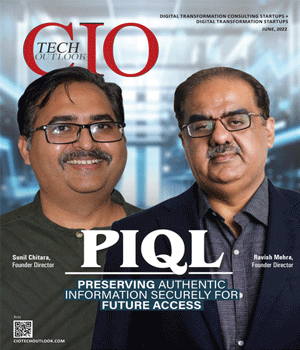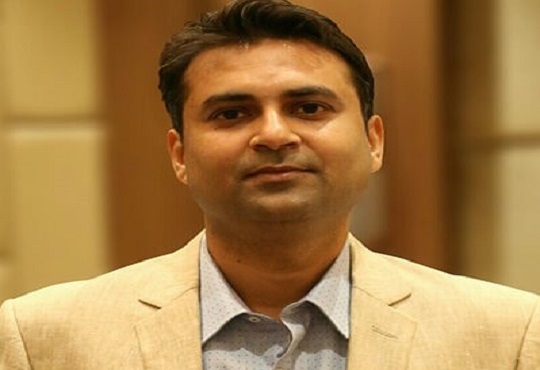
Addressing the Technological Challenges faced by the Biopharmaceutical Industry
Janifha Evangeline | Sunday, 14 May 2023, 20:03 IST

Mr. Siva Kumar Padmanabhan, Managing Director of AstraZeneca India Pvt Ltd, and Head of the Global Innovation & Technology Centre, Chennai, in an interaction with CIOTechOutlook, shares his views on the technological challenges faced by the biopharmaceutical industry, the effective smart factory deployments in biopharma that have common attributes which can result in a fundamental shift in the organizational culture and more.
The biopharmaceuticals market size stood at USD 389.3 billion in 2021 and it is expected to grow at a CAGR of 7.1 percent during 2021–2030. It is projected to reach USD 720.8 billion by 2030. How do you see this market evolving in India? What are the major factors driving the growth of this market?
The Indian biopharmaceutical industry plays a significant role on a global scale and is also a key manufacturing hub for several multinational and Indian pharma companies. The Indian market ranks third in the world in terms of volume and fourteenth in terms of value. Industry reports have stated that the Indian biopharmaceutical market size will reach approximately 65 billion US dollars by 2024 and around 130 billion US dollars by 2030, indicating substantial growth. This indicates a substantial level of growth expected in the Indian biopharmaceutical industry.
Some of the factors that contribute to the market’s growth are the country’s increasing population, healthcare-spend, changing mindset, and affordability of the growing middle class among others. Although it is still in the primary stage, the self-paid market shows great potential. Increased insurance coverage with more options, rise in disposable incomes, urbanization, lifestyle factors, increased investments from multinational companies and foreign direct investments are all contributing to the growth of the Indian biopharmaceutical industry.
If we look at the industry through the lens of technology, biopharma is now at the digital innovation inflection point, and organizations face an important choice to either follow a modular approach or pursue full-scale digital innovation. What would you suggest as the ideal approach for businesses in this space?
When discussing digitization and tech innovation in this industry, it encompasses various approaches across different parts of the business. There is no universal solution that fits all scenarios. However, in general, certain aspects have taken center stage, especially since the onset of the pandemic. The way we live and work has been profoundly influenced by the pandemic, amplifying the possibilities of virtual activities and digitization. Consequently, innovations across industries are rapidly accelerating. The advent of AI, along with other emerging technologies such as extended and augmented reality, virtual reality, and the metaverse, is transforming numerous sectors. Healthcare, in particular, is at the forefront of innovation and technology.
It represents a significant strategic priority for companies worldwide in this industry. Surveys and reports have indicated that over three-quarters of organizations consider digital innovation as a competitive differentiator. This not only facilitates the ease of operations but also impacts the company's competitiveness. Furthermore, digital innovation is becoming a prerequisite for all industries. Studies have demonstrated that companies and leaders who invest in enterprise technology and digitalization experience much faster growth. Few studies suggest growth rates up to 2 times faster, while others indicate up to 5 times faster than those who continue with business as usual. This evidence underscores the criticality of digitalization, extending beyond IT departments or specific areas of the company, to involve CEOs and board members who must drive adequate investment in their company's digitization efforts.
Now, the question arises: Should the approach be more incremental or enterprise-focused? I believe both approaches are necessary, as innovation should permeate throughout the company, not just be limited to specific departments. With the ongoing democratization of digitalization, tools are available for almost every department, function, smaller teams, and individuals to innovate and digitize their work. We now have capabilities for citizen development, workflows, and visualizations that are user-friendly and accessible to all.
A smart factory solution can seem overwhelmingly complex. Effective smart factory deployments in biopharma have common attributes that can result in a fundamental shift in the organizational culture. Please elaborate on how biopharma manufacturers can realize the promise and benefits that the smart factory has to offer.
Smart factory deployments are integral to the future of the biopharmaceutical sector, becoming a fundamental consideration for achieving world-class manufacturing. Our approach revolves around utilizing building blocks that enable us to rapidly assemble the necessary components at each stage of the manufacturing process. These stages encompass sourcing and procurement, quality control, API production, tableting, and other processes involved in biopharmaceutical manufacturing, including bio drugs and large molecule drugs.
Our investments in smart factory building blocks focus on various technologies such as the Internet of Things (IoT), blockchain, batch release, operations technology, and information technology, including sensors integrated into the manufacturing lines. Visualizations also play a crucial role as they provide real-time awareness of the factory's operations. Having the ability to monitor in real-time, identify batch-related issues, understand their causes, and track progress helps in predicting maintenance needs and addressing shortages before they occur. These building blocks form the foundation for efficient manufacturing.
Simulation is another valuable tool that we increasingly deploy even before commissioning a production line. By simulating the line and identifying potential bottlenecks, we can proactively address constraints and ensure a smoother flow of operations.
The concept of continuous manufacturing in the pharmaceutical industry, including continuous API production and biomanufacturing, necessitates a different engineering approach. It requires not only optimizing the production lines and processes but also integrating the appropriate technology. As a result, numerous changes occur, and having the right building blocks and the ability to swiftly deploy the necessary technologies are crucial in supporting smart manufacturing practices.
How do you see the Biopharmaceuticals market evolving in the near future?
The biopharmaceutical industry is undergoing significant transformation. The markets and health systems are shifting, leading to changes across the board. We are witnessing an increase in the number and variety of diseases being treated, including the detection of rare diseases that were previously undetected. As a result, the stages of identification, prevention, treatment, and cure are experiencing substantial transformation and a significant shift. Notably, there is a growing emphasis on prevention and early detection rather than solely focusing on finding cures. The industry as a whole is increasingly dedicated to disease prevention by improving overall health and detecting them at an early stage. Early detection plays a crucial role, especially in diseases like cancer, as it increases the likelihood of successful treatment.
Prevention and early detection are of immense importance. Considerable investments are being made in the early detection of various cancers and rare diseases, particularly in children, as there is a rising trend of identifying them at an earlier stage.
The fundamental nature of evolution is to address emerging challenges that arise in the process, and the biopharma industry is witnessing a paradigm shift and transformation. With leading-edge technology making a foray across the value chain, this transformation is set for a pace that will further enhance healthcare across the world.
CIO Viewpoint
The Constantly Evolving Technology Landscape in...
By Janifha Evangeline
Navigating the Digitalization of Mining Industry
By Janifha Evangeline
How To Achieve An Effective Digital Transformation
By Yogendra Singh, Head-IT/SAP, Barista Coffee Company Limited
CXO Insights
No-code platforms: Enterprise-wide Adoption...
By Rahul Murthi, Director at Acies
Unleashing the Potential of IT in Engineering...
By Gyan Pandey, Head - Digital/CDO, Voltas
Low Code and Artificial Intelligence - The...



.jpg)

.jpg)





